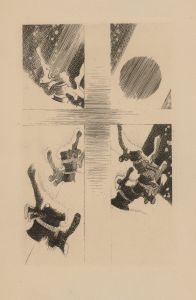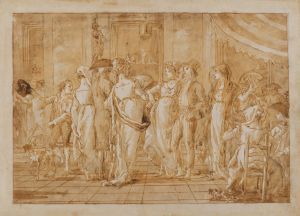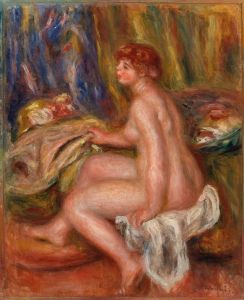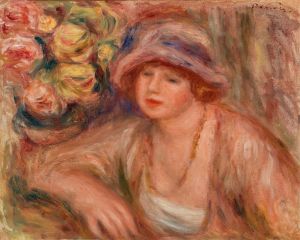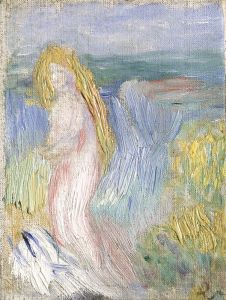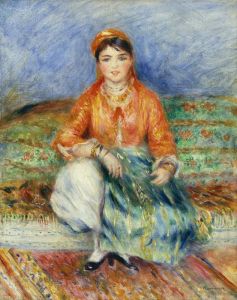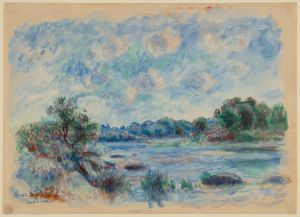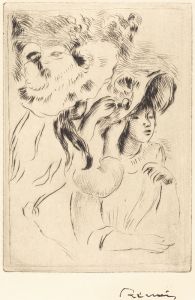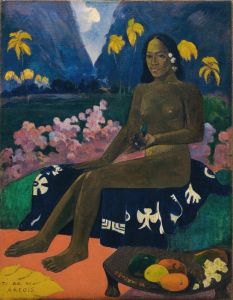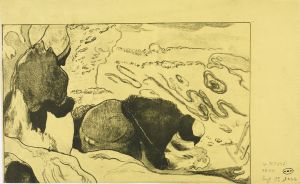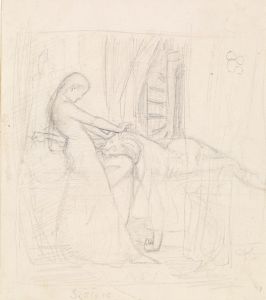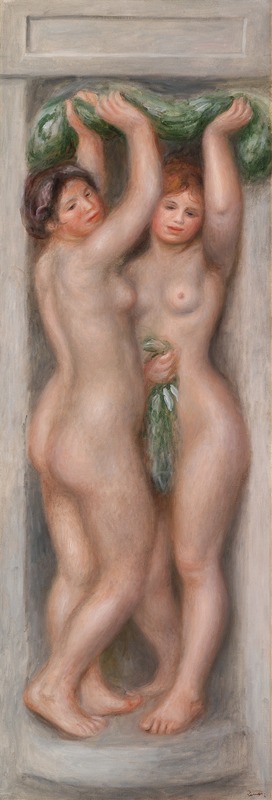
Caryatids ; also called Deux baigneuses
A hand-painted replica of Pierre-Auguste Renoir’s masterpiece Caryatids ; also called Deux baigneuses, meticulously crafted by professional artists to capture the true essence of the original. Each piece is created with museum-quality canvas and rare mineral pigments, carefully painted by experienced artists with delicate brushstrokes and rich, layered colors to perfectly recreate the texture of the original artwork. Unlike machine-printed reproductions, this hand-painted version brings the painting to life, infused with the artist’s emotions and skill in every stroke. Whether for personal collection or home decoration, it instantly elevates the artistic atmosphere of any space.
Pierre-Auguste Renoir, a prominent French artist associated with the Impressionist movement, created the painting known as "Caryatids," also referred to as "Deux baigneuses" (Two Bathers). Renoir, born in 1841, was renowned for his vibrant light and saturated color, often focusing on people in intimate and candid compositions. His work is celebrated for its beauty, sensuality, and depiction of light.
"Caryatids" is a notable example of Renoir's exploration of the human form and his interest in classical themes. The term "caryatid" traditionally refers to a sculpted female figure serving as an architectural support, taking the place of a column or pillar. This classical reference indicates Renoir's engagement with art history and his ability to blend traditional themes with modern techniques.
The painting "Caryatids" or "Deux baigneuses" features two female nudes, a subject Renoir frequently explored throughout his career. His fascination with the nude form is evident in many of his works, where he often depicted women in natural settings, emphasizing their grace and beauty. In this painting, Renoir captures the figures with a sense of fluidity and movement, characteristic of his style during this period.
Renoir's technique in "Caryatids" showcases his mastery of color and light. He employs a soft palette, using gentle brushstrokes to create a sense of harmony and warmth. The figures are rendered with a delicate touch, highlighting their curves and the play of light on their skin. This approach reflects Renoir's departure from the more rigid and formal compositions of academic art, embracing instead the spontaneity and immediacy that Impressionism offered.
The painting also reflects Renoir's interest in the interplay between the human form and nature. The background, though not the focal point, complements the figures, creating a serene and idyllic atmosphere. This setting enhances the timeless quality of the work, aligning with the classical theme suggested by the title.
Renoir's "Caryatids" is part of a broader body of work where he explored similar themes and compositions. Throughout his career, Renoir returned to the subject of bathers, each time bringing a fresh perspective and technique. This particular painting is an example of his mature style, where he balanced the influence of classical art with the innovations of the Impressionist movement.
The painting is housed in the Musée d'Orsay in Paris, a museum known for its extensive collection of Impressionist and Post-Impressionist masterpieces. "Caryatids" remains an important work within Renoir's oeuvre, illustrating his ability to blend classical inspiration with modern sensibilities, and his enduring fascination with the beauty of the human form.





